The Edmonton Oilers, like every other NHL team, have made trades at the trade deadline to either improve their team for a playoff run or sell pieces and look to the next season. Some have worked out, while others look bad. We will start with looking back at the five most recent trade deadlines and what the Oilers did which have led to mediocre results, then listing the top five best and top five worst trade deadline deals in their history.
Moves Made Over the Past 5 Trade Deadlines
2023
The Oilers completed three trades at the 2023 Trade Deadline as Ken Holland decided to make a big splash and reward the Oilers. His intention was to switch things up defensively as the Oilers acquired Mattias Ekholm (4 percent retained) and a 2024 sixth-round pick in exchange for Tyson Barrie, Reid Schaefer, a 2023 first-round pick, and a 2024 fourth-round pick. This may seem like a big price to pay, but Ekholm is a proven shutdown defenceman who will take pressure off of Darnell Nurse, be a great mentor for Evan Bouchard and Philip Broberg as he was with Dante Fabbro and Alexandre Carrier in Nashville, while providing offence and defence.
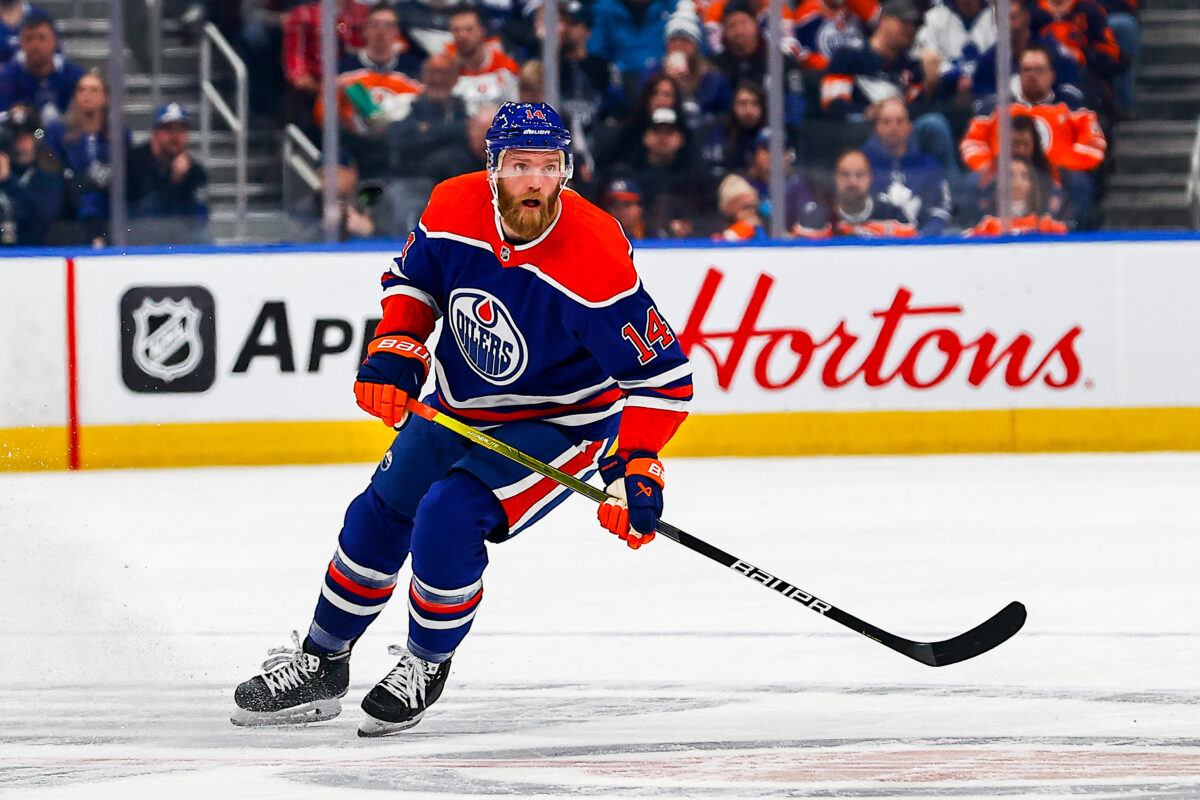
To go along with that massive trade for the Oilers, Holland dealt Jesse Puljujarvi to the Carolina Hurricanes prior to that to free up cap space in order to acquire Ekholm. The Oilers got back prospect Patrik Puistola who is a 22-year-old with solid upside who has spent the last five seasons in SM-liiga. At this stage, it was a win to not only give up no assets to move Puljujarvi but get a prospect back in return.
The final trade that occurred on deadline day was the acquisition of Nick Bjugstad and Cam Dineen from the Arizona Coyotes in exchange for Michael Kesselring and a 2023 third-round pick. Bjugstad will fill the depth forward need for the Oilers, providing scoring, physicality, size, and the ability to play centre or the wing. The Oilers got him at 50 percent retained ($450,000). Kesselring was having a great American Hockey League season, but that’s the cost of doing business. Dineen is having a solid season of his own. Kesselring has already played in an NHL game for the Coyotes immediately following the trade. Overall, the Oilers addressed their biggest needs and are primed for a strong finish to the 2023 season.
2022
The Oilers weren’t overly busy on 2022 Trade Deadline day as they made just two moves. One of the trades turned out very well while the other ended up being a little lackluster. The Oilers first traded with the Montreal Canadiens, acquiring Brett Kulak in exchange for William Lagesson, a 2022 second-round pick, and a 2024 seventh-round pick.
This was the trade that turned out very well for the Oilers as Kulak became the calming and defensive presence alongside Tyson Barrie that the team needed. They were the most effective pair down the stretch and throughout playoffs, resulting in a well-priced four-year extension for Kulak with the Oilers. He is someone who will bridge the gap between the second and third pairing until Philip Broberg can assume a top-four role permanently.
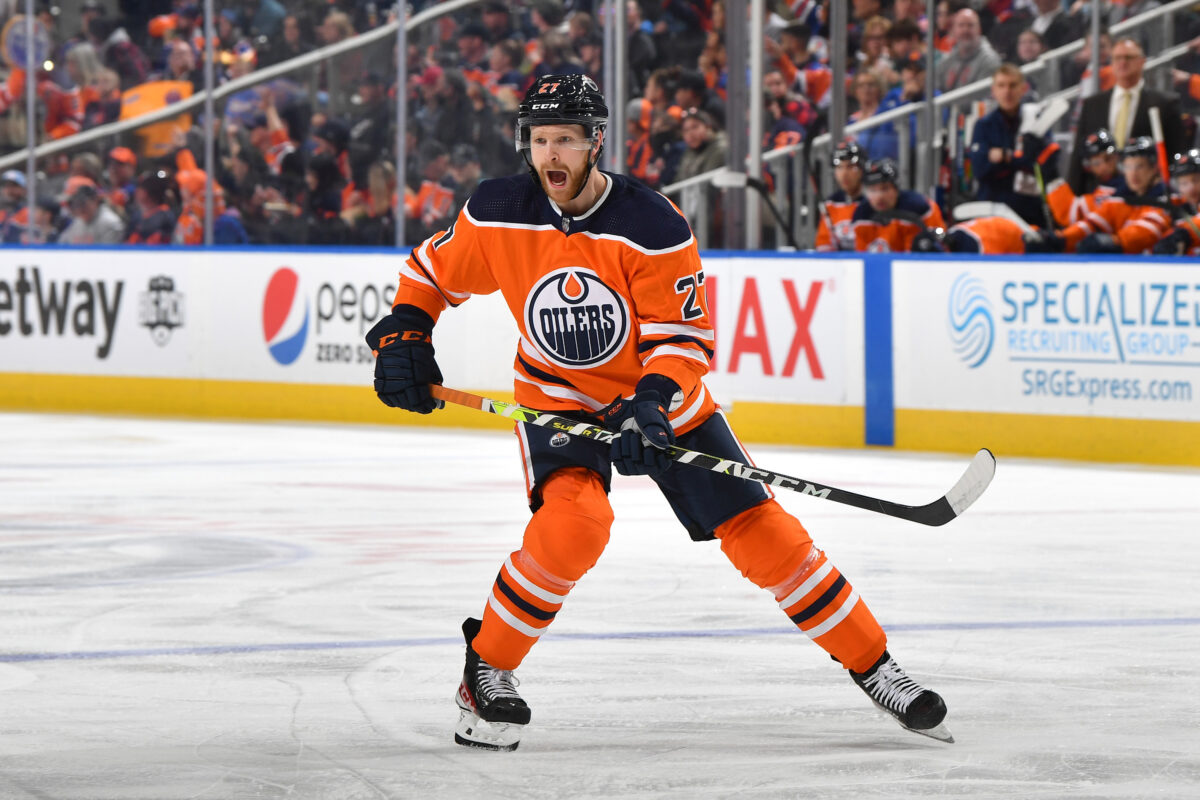
There was no room for Lagesson on the Oilers’ defence group and he played just three games for the Canadiens to close the 2021-22 season. He has spent all season with the Chicago Wolves of the AHL this season. The second-round pick the Canadiens received was used to draft Lane Hutson. Seeing as the Oilers are oozing with young talent in their organization, it’s not a big loss at all.
The second of the two trades the Oilers made was to acquire Derick Brassard for some forward depth from the Philadelphia Flyers in exchange for a 2023 fourth-round pick. He started his short tenure in Edmonton on the right foot and found a spot on the third line. He closed out the regular season with two goals and three points while eventually averaging under 10 minutes a game. Once the Oilers started the playoffs, Brassard got into one game and didn’t provide anything.
2021
The Oilers did relatively nothing at the 2021 Trade Deadline, making only one move. They acquired Dmitry Kulikov from the New Jersey Devils in exchange for a 2022 conditional fourth-round pick. The condition was the pick would upgrade to a 2022 third-round pick if the Oilers won a playoff round, which they did not.
Related: Oilers Should Call Up Holloway, Marody, or Griffith With Puljujarvi Injury
Kulikov didn’t play too many games, having to sit in quarantine since he was coming from the United States. This, as well as an already shortened season, only allowed the Oilers to have him for 10 regular season games and three postseason games. He assisted on two goals in the regular season and overall was a minus-2 while playing less than 18 minutes a game.
Kulikov signed with the Minnesota Wild in the offseason and has enjoyed a successful season thus far on a good team.
2020
The Oilers had one of their busiest trade deadline days in their history, pulling off four separate trades. The first started with acquiring veteran defenceman Mike Green from the Detroit Red Wings, sending Kyle Brodziak and a conditional 2020 fourth-round pick the other way. The condition was not met, as the Oilers would have had to make it to the Conference Final and have Green play in at least half of the games for the pick to turn into a third-round pick. Green played two games for the Oilers, got injured, and retired after the season ended.
Next, the Oilers made another deal with the Red Wings. In an attempt to grab a dynamic winger to play with either Connor McDavid or Leon Draisaitl, Ken Holland traded for a player he had drafted with his former team, Andreas Athanasiou, along with Ryan Kuffner, Sam Gagner and two second-round picks (2020 and 2021) went back to the Red Wings.
This deal didn’t work out in favour of Edmonton, as Athanasiou couldn’t find his footing and recorded one goal and one assist in nine regular-season games before going pointless in four playoff games. Though he was a restricted free agent (RFA), the Oilers decided not to qualify him and let him walk in free agency. Gagner is still playing in Detroit, while both second-round picks are turning out nicely. More on that later.
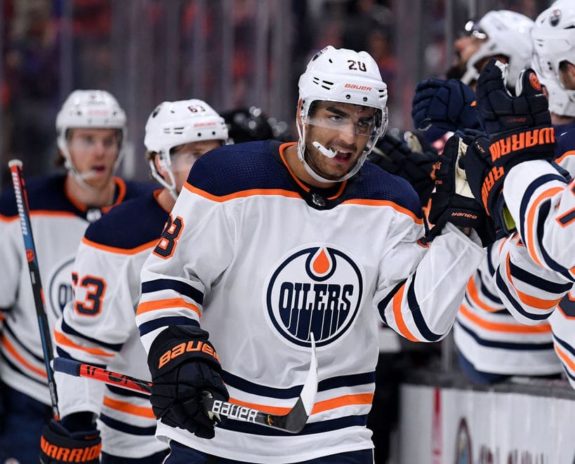
The third move of the day involved the Oilers acquiring underrated forward Tyler Ennis from the Ottawa Senators for a 2021 fifth-round pick. Also playing in the remaining nine regular season games, Ennis scored twice and had four points before adding one goal and one assist in three playoff games. Edmonton elected to re-sign him and he put up nine points in 30 games the following season. Overall, this move worked out very well.
The final move was a very minor one for the Oilers, trading Joel Persson to the Anaheim Ducks for a conditional seventh-round pick. The condition of Persson playing 17 games in the NHL in 2020-21 was not met, so the Oilers didn’t receive the pick. This was essentially to just clear a spot and potentially gain another draft pick.
2019
The Oilers weren’t in the playoff race this season, as they elected to pull off two one-for-one trades, not helping them at all in the end. The first move was dealing Cam Talbot, who was having a down season, to the Philadelphia Flyers in exchange for promising young goaltender Anthony Stolarz, who didn’t re-sign with Edmonton and is playing very well as the backup for the Anaheim Ducks this season.
The other move was the fourth one-for-one trade made that started with Jordan Eberle and turned into Gagner. The Oilers traded Ryan Spooner for Gagner to bring back the once bright young talent they drafted in the first round in 2007. As you read above, he was later sent to the Red Wings.
2018
The first year after the Oilers snapped their 10-year playoff drought, they found themselves back at the bottom of the Western Conference yet again. They didn’t have much value to sell, as they didn’t expect to fall off after such a dominating year. They ended up making three minor deals starting two days before the trade deadline.
They first sent Brandon Davidson to the New York Islanders for a 2019 third-round pick that turned into promising goaltending prospect Ilya Konovalov.
The next day the Oilers sent Mark Letestu to the Nashville Predators for fringe-NHLer Pontus Aberg who actually played pretty well for them to end the season, recording eight points in 16 games before moving on to the Ducks in 2018-19.
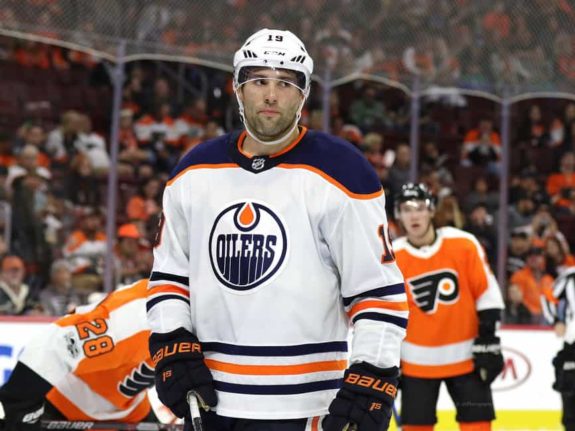
The final trade made on deadline day was to send Pat Maroon to the New Jersey Devils for Joey Dudek and a 2019 third-round pick. Dudek is an ECHL player and the Oilers did manage to turn that third-round pick into Cooper Marody less than a month later by sending it to the Philadelphia Flyers.
Oilers’ 5 Best Trades at the Deadline
Despite the past five trade deadlines bringing in less-than-ideal results, the Oilers have managed to pull off some impressive trades that have helped their team many years afterward. It’s too early to judge the Ekholm acquisition just yet as he has only played a few games, but it could very well turn out to be one of the best deadline trades down the line.
5. 1993
The Oilers were turning a corner after winning five Stanley Cups over the past decade. At the 1993 Trade Deadline, the Oilers sent 28-year-old Esa Tikkanen to the Rangers in exchange for 21-year-old Doug Weight. They made this trade at the perfect time to acquire a young star in the making and moving Tikkanen who was already on the decline. Tikkanen had topped 70 points three times in his first four years in the NHL and even scored over a point-per-game. His final season in Edmonton before being traded saw his production drop to 0.5 points per game.
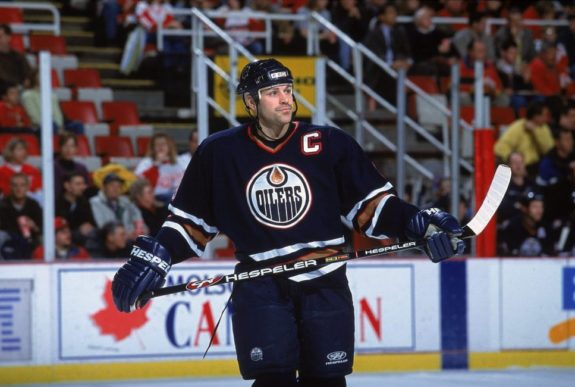
By moving Tikkanen, the Oilers got Weight who ended up playing eight seasons in Edmonton, posting a career-high 104 points just three seasons after being acquired. He scored 20-plus goals in all six of the seasons where he played at least 50 games. He finished his Oilers career ranked eighth in goals with 178, while Weight finished ninth with 157 goals and sixth with 420 assists. They also had both players in their primes.
4. 2016
The Oilers were looking for some size and a physical player to play beside Connor McDavid. Half a season before signing Milan Lucic to a big deal, they went out and traded for Maroon, sending Martin Gernat and a 2016 fourth-round pick to the Ducks. Gernat was a defensive prospect who was struggling, while Maroon formed instant chemistry with McDavid on the top line.
You may also like:
- Oilers Shouldn’t Trade Beau Akey for a Top-4 Defenceman
- Oilers & Panthers Are Still the Teams to Beat in the NHL
- Oilers Snap Senators’ 6-Game Winning Streak, Win 3-1
- Projected Lineups for the Oilers vs Senators – 12/22/24
- Oilers’ Leon Draisaitl Should Be Hart Trophy Favourite
During his time in Edmonton, the best hockey of his career, Maroon scored 49 goals and 86 points in 154 games. He even scored 27 goals in his first full season with the Oilers, almost all of them coming at even strength before they eventually traded him to the Devils in 2017.
3. 2011
In the middle of the dark years in Edmonton, they made a very underrated move in acquiring a future stud on defence and giving them two first-round picks in 2011. The Oilers made a deal with the Los Angeles Kings, sending Dustin Penner over for their Stanley Cup run. But after four and a half solid seasons in Edmonton, Penner quickly declined with the Kings.
In return, the Oilers got Colten Teubert, a 2011 first-round pick, which turned into Oscar Klefbom, and a 2021 third-round pick. Teubert did next to nothing for them, recording one assist in 24 games that season, while Klefbom was the real prize. He was an effective top-pairing defenceman who was good on the power play. He has 156 points in 378 career games, all with Edmonton, but has unfortunately been injured for the past two seasons.
2. 2006
In the Oilers’ last appearance in the Stanley Cup Final, they got the help they needed to make the playoffs and make it that far the day before the trade deadline. The Oilers acquired goaltender Dwayne Roloson from the Minnesota Wild for a 2006 first-round pick (Trevor Lewis), and a 2007 third-round pick (Spencer Machacek).
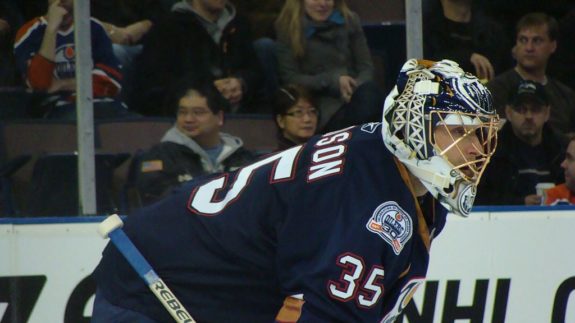
Roloson went 12-5 with a .927 save percentage (SV%) in the playoffs for the Oilers before getting injured in the Stanley Cup Final. It was an incredible run that he played a huge part in. He spent three more seasons with the team, posting his best numbers during his final season when he finished with a .915 SV%.
Lewis got his start as a member of the Kings, and played close to 700 games with them. He is a career bottom-six forward but is still playing in the NHL. As for Machacek, he played a total of 25 NHL games, his last coming in 2011-12.
1. 1999
Near the beginning of a productive seven years that culminated with a Cup Final appearance, the Oilers managed to take Jason Smith off the Toronto Maple Leafs’ hands right as he was entering his prime. Going the other way was a 1999 fourth-round pick (Jonathan Zion) and a 2000 second-round pick (Kris Vernarsky).
Smith spent 682 regular season games with the Oilers and was the captain of the team that made it all the way to the Cup Final. Zion never played a game in the NHL, while Vernarsky played a total of 17 games, scoring one goal. This trade for a future captain and a very solid defensive player was seemingly for nothing.
Oilers’ 5 Worst Trades at the Deadline
The worst trades the Oilers have made in their history typically involve giving up on a young talent too early, seeing them find success elsewhere.
5. 2020
Ken Holland and the Oilers really missed acquiring talent that would help them make a run in 2020, starting with trading for Mike Green in the first of two trades to the Red Wings that season. Green did nothing for the Oilers, playing two games and then retiring after the season.
Related: Worst Trades in Oilers’ History
The Oilers sent Brodziak and a 2020 fourth-round pick (Jan Bednar) back to the Red Wings. Bednar is currently playing in the Quebec Major Junior Hockey League (QMJHL) and has made improvements from last season. Even if he doesn’t amount to much, that’s another pick they just gave away. Brodziak didn’t play a game for the Red Wings and retired as well.
4. 2016
Just another young defenceman the Oilers gave up on too early. Justin Schultz broke into the NHL with the Oilers as an offensive defenceman who hadn’t yet reached his peak. They decided to trade him to the Pittsburgh Penguins who went on to win back-to-back Stanley Cups in the following seasons. In the 2016-17 season, Schultz finished 10th in Norris Trophy voting and put up 51 points in 78 games.
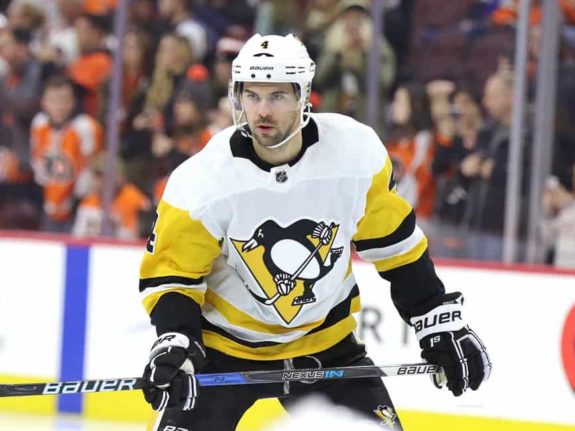
In return for a top-four offensive defenceman who would spend four more seasons with the Penguins, the Oilers got a 2016 third-round pick which turned into Filip Berglund. He has yet to break into the NHL, but could eventually. He is a big defenceman who is playing his first season in North America with the Bakersfield Condors of the American Hockey League (AHL).
3. 2020
Two seasons ago the Oilers were looking for help on the wing for McDavid and Draisaitl. In a down season, Holland thought he would be able to find it in his old team from a player he drafted with the Red Wings. The Oilers went out and traded for Athanasiou and Kuffner, sending Gagner, a 2020 second-round pick (Faber), and a 2021 second-round pick (Raty) back to the Red Wings.
It’s tough to fully judge the scale of this bad trade until both draft picks get a little further into their careers. Either way, the Oilers traded a hefty price for a player that played nine games for them. Raty is playing his third season in Finland in the SM-liiga and has impressed, recording 28 points in 29 games. He could be a steal of the 2021 NHL Draft. Faber is in his second season playing at the University of Minnesota in the Big-10. He is progressing well and should find himself in the NHL in a few years time.
As I mentioned above, the Oilers let Athanasiou walk after a disappointing showing for the team while Kuffner played in only four games for the Condors before moving on as well. Losing those high picks and a once impactful young player in the same year will come back and haunt them down the line. Even now, having two less pieces to use to acquire extra help while they are in their Stanley Cup window.
2. 1992
A major blunder on the part of the Oilers was trading a former first round pick in Martin Rucinsky to the Quebec Nordiques for Ron Tugnutt and Brad Zavisha. Rucinsky played just two games for the Oilers before breaking out the following year for the Nordiques. He finished his career at age 36, having played 961 games while posting 241 goals and 612 points.
You may also like:
- Oilers Shouldn’t Trade Beau Akey for a Top-4 Defenceman
- Oilers & Panthers Are Still the Teams to Beat in the NHL
- Oilers Snap Senators’ 6-Game Winning Streak, Win 3-1
- Projected Lineups for the Oilers vs Senators – 12/22/24
- Oilers’ Leon Draisaitl Should Be Hart Trophy Favourite
Tugnutt played just 29 games in net for the Oilers and put up horrible numbers. He was 10-13-2 with a 4.23 goals against average (GAA) and .877 SV%. Zavisha played just two games for the Oilers. They could have definitely used a point producer like Rucinsky in the late 1990s and early 2000s when they were competitive.
1. 2015
I mentioned Schultz as a young defenceman the Oilers had and traded away too soon. But the Oilers made an even larger mistake letting go of Jeff Petry. He was a late bloomer and really became a dominant defenceman at both ends of the ice at age 30. The Montreal Canadiens, the team that acquired him from the Oilers, had to wait a couple years to really reap the rewards, but it has been well worth it as he has scored at least 11 goals and 40 points in four consecutive seasons.

Coming back to Edmonton was a 2015 second-round pick (Caleb Jones) and a 2015 fourth-round pick (Jonas Siegenthaler). Neither player has turned out bad, but neither of them are even close to the level that Petry is at. Plus the Oilers don’t have either Jones or Siegenthaler in their organization anymore.
The Oilers have made some splashes at the trade deadline that have come back to haunt them, but have made a couple solid ones that have turned out good for them as well.
I would like to hear your thoughts on the best and worst deals made at the trade deadline. What would you change? Comment below.
